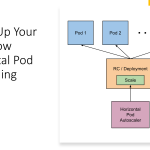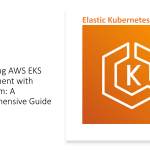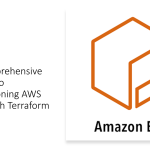GitOps has emerged as a powerful paradigm for managing Kubernetes clusters and deploying applications. Two popular tools for implementing GitOps in Kubernetes are Flux and ArgoCD. Both tools have similar functionalities, but they differ in terms of their architecture, ease of use, and integration with cloud platforms like Azure AKS. In this blog, we will compare Flux and ArgoCD and see which one is better for use in Azure AKS.
Flux:
Flux is a GitOps tool that automates the deployment of Kubernetes resources by syncing them with a Git repository. It supports multiple deployment strategies, including canary, blue-green, and A/B testing. Flux has a simple architecture that consists of two components: a controller and an agent. The controller watches a Git repository for changes, while the agent runs on each Kubernetes node and applies the changes to the cluster. Flux can be easily integrated with Azure AKS using the Flux Helm Operator, which allows users to manage their Helm charts using GitOps.
ArgoCD:
ArgoCD is a GitOps tool that provides a declarative way to deploy and manage applications on Kubernetes clusters. It has a powerful UI that allows users to visualize the application state and perform rollbacks and updates. ArgoCD has a more complex architecture than Flux, consisting of a server, a CLI, and an agent. The server is responsible for managing the Git repository, while the CLI provides a command-line interface for interacting with the server. The agent runs on each Kubernetes node and applies the changes to the cluster. ArgoCD can be integrated with Azure AKS using the ArgoCD Operator, which allows users to manage their Kubernetes resources using GitOps.
Flux vs. ArgoCD: A Tabular Comparison
| Feature | Flux | ArgoCD |
|---|---|---|
| Focus | Automated deployments, configuration management as code | More complete GitOps solution, multi-cluster management, application promotion, rollback management |
| Deployment Automation | High | Moderate (user-defined automation levels) |
| Source of Truth | Git | Git |
| Configuration Type | Declarative (Kubernetes manifests) | Declarative (Kubernetes manifests) |
| Secret Management | Requires external secret management tool | Requires external secret management tool |
| User Interface | Basic | Feature-rich |
| Extensibility | Moderate (integrates with Helm, Kustomize) | High (integrates with various tools, webhooks) |
| Cluster Drift Reconciliation | Limited (varies by resource kind) | Optional (requires automatic sync enabled) |
| Advanced Deployments | Requires Flagger integration | Requires Argo Rollouts extension |
| Pros | Simple, automated deployments, lightweight | Feature-rich, multi-cluster support, good for complex deployments |
| Cons | Limited access control, less extensible | More complex setup, user needs to define automation |
In summary:
Now that we have an understanding of the two tools, let’s summarize them based on key factors:
- Architecture: Flux has a simpler architecture than ArgoCD, which makes it easier to set up and maintain. ArgoCD’s more complex architecture allows for more advanced features, but it requires more resources to run.
- Ease of use: Flux is easier to use than ArgoCD, as it has fewer components and a more straightforward setup process. ArgoCD’s UI is more user-friendly than Flux, but it also has more features that can be overwhelming for beginners.
- Integration with Azure AKS: Both Flux and ArgoCD can be integrated with Azure AKS, but Flux has better integration through the Flux Helm Operator, which allows users to manage Helm charts using GitOps.
- Community support: Both tools have a large and active community, with extensive documentation and support available. However, Flux has been around longer and has more users, which means it has more plugins and integrations available.
Conclusion:
In conclusion, both Flux and ArgoCD are excellent tools for implementing GitOps in Kubernetes. Flux has a simpler architecture and is easier to use, making it a good choice for beginners. ArgoCD has a more advanced feature set and a powerful UI, making it a better choice for more complex deployments. When it comes to integrating with Azure AKS, Flux has the advantage through its Helm Operator. Ultimately, the choice between Flux and ArgoCD comes down to the specific needs of your organization and your level of experience with GitOps.





